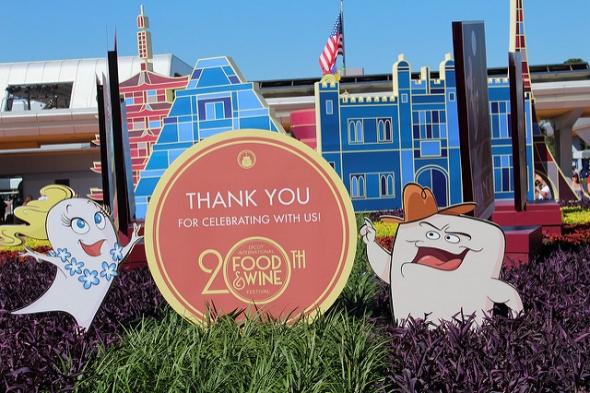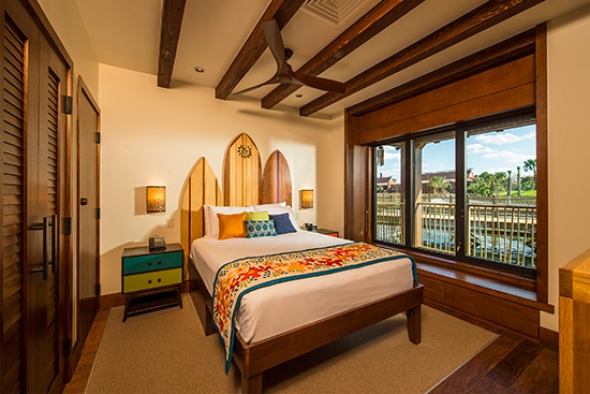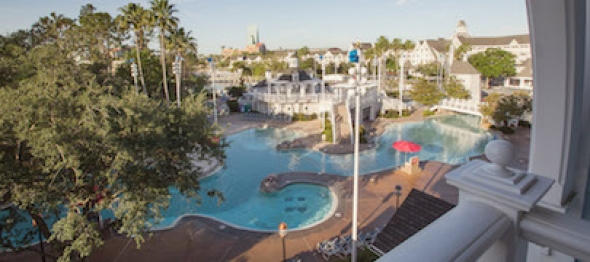3. Understand the points chart
The time of year when you vacation at a Disney theme park will influence the amount of points you spend. The same room at the Polynesian that “costs” 16 points on a weekday in January could be 31 points during a peak season like the week of Christmas. You have to pay nearly twice as much to stay at a busier time. Over the course of seven days, that's a difference of 105 points! You should consider this when planning your trip.
If you’re not married to a certain time of the year like Spring Break, the Food & Wine Festival at Epcot, or your birthday/anniversary, you can save yourself a lot of points. January, September, October, and the early part of December generally cost loss on the points chart. You could even aim for May if you want to enjoy some Florida sun without blowing all your points.
Theme park tourists who are renting points might not understand what points mean in terms of dollars. Here's what it means in terms of actual dollars. As a baseline, expect a single point to cost $15. That means a trip that requires 100 points would have a total DVC resort charge of $1,500. The good news about this calculation is that you won’t pay tax, meaning the price is the price. So, just figure out the numbers of points you need then multiply by 15. That's your room cost for a DVC room rental.
4. Think bigger AND smaller
Image: Disney
One of the novel aspects of booking via DVC instead of a regular reservation system is that you gain unusual options. DVC resorts feature room designs that are universally larger than regular ones. You’ll gain a lot more space to stretch out and, if you’re anything like me, throw around your luggage and daily necessities.
How much extra space are we talking about? Even the smallest standard studio hotel room in the program is 339 square feet. The largest ones are at Disney’s Polynesian Village Resort. Those are 465 square feet, larger than many extended stay accommodations. You can also sleep either four or five people in a DVC studio, depending on your designated resort.
As an fyi, staying via the DVC program can give you more than space. If you choose to spend more points for a one-bedroom (or larger) villa, you gain an extra option. These rooms come with excellent kitchenette facilities. You’ll have the ability to cook in your room. While not everyone likes the idea of cooking while on vacation, selecting a villa can actually save thrifty travelers some money.
Meals at Disney theme parks are almost all more expensive than what you’d pay for the same food at a standard restaurant. Guests who are willing to cook in their room or, at the very least, order takeout that they can refrigerate then reheat later, will save a great deal of money. Since Disney park restaurants have extravagant food markups, the financial savings on meals can counterbalance the points total to go from a studio to a villa. Play with the math here to see if the option works for you. My family is HUGELY pro Disney Dining Plan, so we don’t employ this particular tactic, but a lot of DVC members swear by it.
5. Other considerations
Image: Disney
Booking via DVC does come with its own set of quirks. As an example, you can’t purchase an all-inclusive tickets package with your room. You’ll have to buy your park entry separately. DVC members who purchase directly through the company will receive the occasional discount offer for tickets or a season pass, but even that option is unreliable. When you use DVC, plan to frequent a site like Undercover Tourist to get the best ticket deals, too.
As mentioned above, the Disney Dining Plan operates the same way for DVC members as regular guests. The same rules apply, too. You must purchase the plan for every listed guest in your hotel room, and you must buy it for each day of your hotel stay. Similarly, you can use Magical Express since you’re staying onsite.
When you book your room, the two other important considerations involve logistics. You’ll want to consider transportation options to and from the properties. This goes hand in hand with the conversation about locality above. Some resorts offer better access to the various theme parks than others. Many of the options are straightforward. If you want to hang out at Animal Kingdom, Jambo House and Kidani, the twin Animal Kingdom Villas, are the obvious choices. A Magic Kingdom fan should choose Bay Lake Tower if they don’t want to bother with transportation at all. The DVC side of the resort is only a short walk away from the Most Magical Place on Earth.
Location isn’t the only consideration, though. How do you enjoy spending your Disney vacations? Do you love to hang out by the pool? If so, Beach Club is your best bet since its pool, Stormalong Bay, is like a mini-water park. Guests who love to play golf or tennis will have a differing opinion of Old Key West and Saratoga Springs than people visiting Walt Disney World for the rides. Those two resorts cater to an older and more outdoorsy crowd.
To a larger point, each DVC participant has its own strengths and weaknesses. You should sketch out what you want to do on vacation and then research which property is best for your needs. As long as you do this, you'll love every second of a Disney hotel stay using DVC points. It's the only way for theme park tourists to travel to Disney, at least according to my family.




Add new comment